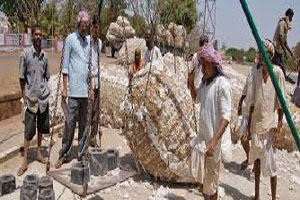
Cotton trade likely to follow uniform unit of measurement soon
YarnsandFibers News Bureau 2017-03-16 10:00:00 – AhmedabadA committee empowered by the Textiles Commissioner of India which comprises of 7-8 representatives from the cotton trade, stakeholders, exporters and Cotton Corporation of India (CAI) have proposed a uniform unit of weight for the domestic and international cotton trade in kilos or tonnes. This is going to be a major reform for the cotton trade in India.
So far, cotton has been traded in different weight units at different parts of the value chain in different growing regions in the country. For example, Gujarat, the largest cotton producer, uses bales (each of 170 kg) for cotton procurement from markets, while kapas (raw, unginned cotton) is weighed in quintals. Ginned cotton is quoted in candies (355.62 kg each).
According to Arun Brijmohan Sekhsaria, a leading cotton trader, and one of the members on the Committee, a uniform unit of weight is very much required for the cotton trade in India as there are different units at different levels of the value chain. Even in different growing States there are different units for kapas. Somewhere it is quoted in maund, somewhere it is quoted in quintal.
Nowhere in the world is cotton procurement quoted in bales. It is necessary not in terms of price or volume but important for a uniform quality standard.
Currently, the discussion on adopting a uniform unit of weight for cotton is at the level of the Textiles Commissioner's Office. The Textile Commissioner has mandated the Committee to explore this possibility. They are exploring how it can be done. Meanwhile, they have already recommended that buying should be in terms of kilos or tonnes only. This will make pricing accurate.
Trader sources welcomed the move as a step towards more uniformity and transparency in the cotton trade. It was required as the price quoted in different States is based on different units of weight. It causes ambiguity and confusion for the exporters, who have to plan their purchases accordingly as they aren’t sure exactly how much cotton will be there in a bale — 160 kg or 165 kg. Export orders have a +/-5 percent variation in the weight.
Cotton has been quoted in different weights at different parts of the value chain. At production level, farmers get the price based on quintal weight, the procurement at the market/mandis is quoted in bales.
While the Government of India has fixed a weight of 170 kg for a bale, many states still have bales with 160-165 kg. Ginned cotton is quoted in candy, while exports take place in terms of tonnes.
However, there are different views coming from some traders, who believe having a uniform unit of weight would prove to be a futile exercise.
A decision on the same is likely to be taken at the next board meeting of the Cotton Advisory Board (CAB), constituted by the Government of India to estimate crop, exports and cotton trade in the country.
Market Intelligence
Ask for free sample Report

experience
Customer Base
dedicated team
Countries Served Worldwide









